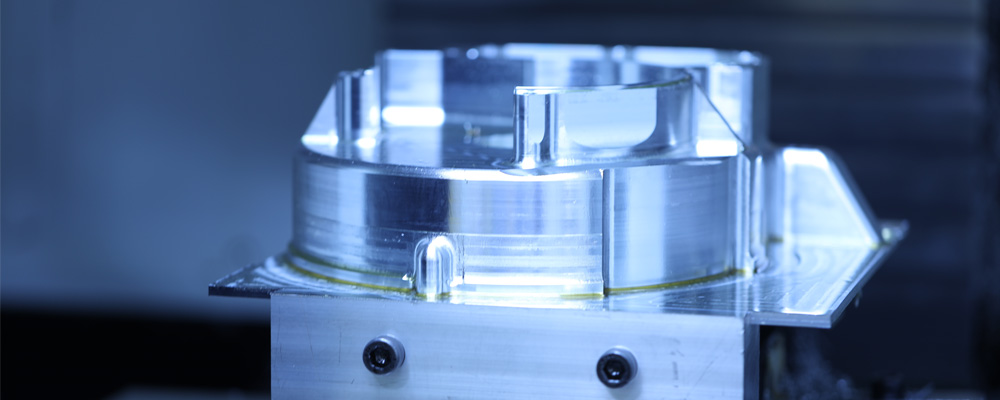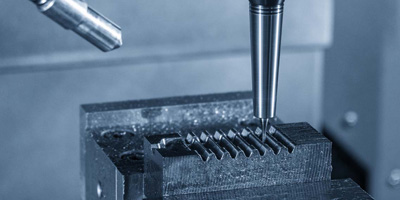The market competitiveness and pressure to produce and machine parts more efficiently and quickly have shifted the focus from conventional machining to high-speed machining (HSM). High-speed machining involves achieving a higher material removal rate by employing greater spindle speed, higher feed, and cut speed. HSM can help improve productivity, decrease cycle time and enhance the life of the tool efficiently.

Aluminum has one of the highest machinability characteristics and its applications in various industries, especially aerospace and automobile industries have grown tremendously in the past years. Therefore, the desire to make the aluminum milling process more efficient and productive has led to the adaptation of the high-speed machining process by various industries. However, there are some challenges to aluminum milling which need to be handled to make the process safe and efficient. Some of these challenges are:
- High-speed machining produces high heat at the surface-tool interface. This heat can make the aluminum work-hardened and can make further machining and milling process difficult. To overcome this, a cooling strategy must be employed.
- High-speed machining means higher cutting speed rates, which leads to enhanced vibrations and chatter. These vibrations are detrimental to tool life and can also damage the aluminum part. Therefore, extra precaution must be given to balancing and design of tool used while performing the milling apparatus on a high-speed machine.
- The higher cutting speeds during milling mean greater cutting forces on the tool and workpiece. These greater forces can make the tool handling more complex. If not done properly, the tool can disengage from the handler and cause damage to the machine as well as the operator.
- The operating of high-speed machining requires extra skills than conventional machines. An unskilled operator and technician can prove harmful.
Once these challenges are overcome and the safety of the operator is ensured, the benefits of high-speed machining can be reaped. The paramount characteristic of an efficient machining process is the feed rate. Higher feed rates ensure higher productivity of the machining process. One aspect that differentiates high-speed machining from conventional milling is the higher feed speed that can be achieved with HSM. Furthermore, the higher machinability of aluminum makes its milling more efficient and productive as compared to other metals or composites. This favorable property of aluminum makes it beneficial for use in the aerospace and automotive industry. The higher material removal rate makes the milling process quicker and efficient. The production of automotive and aerospace parts, that require a larger quantity of material removal, is more productive using high-speed milling machines.

An important consideration, while employing a high-speed milling machine, is the increased temperatures at the cut point. Studies indicate a rise in temperature as the feed rates are increased. This can cause a change in material’s mechanical properties by work hardening. This results in increased mechanical strength and a decrease in machinability. To overcome this challenge, a coolant must be used. With aluminum, a favorable property is a decrease in temperatures eventually as the speed rises beyond a certain point. Initially, with an increase in feed speed, the temperature at the cut increases. After the temperature reaches a maximum value, any further increase in feed speed causes a drop in the temperature. This lowered temperature is favorable for our milling process of aluminum as the coolant requirements are low and the mechanical properties of materials are unaffected.
Another advantage of aluminum milling using high-speed machining is the production of thin chips. As the cutting speeds are higher with reduced diameters of cutting tools, the chips produced during milling are thin. Another factor contributing to these thin chips is the machinability of aluminum. This soft metal, unlike other alloys and metals like titanium, chromium, and tungsten alloys, is easier to machine and hence at higher speeds produces thinner chips. These thin chips are favorable for the milling process as they help in heat dissipation. The chips transfer heat from the point of cut and hence, reduce the chances of work hardening. This otherwise work-hardened material can deteriorate the tool and may even break it or can cause damage to the workpiece itself.
The use of reduced diameters for cutting tools during aluminum milling is also possible for high-speed milling machines. In conventional milling, larger diameter cutting tools are used at lower spindle rotating speeds. However, for HSM, reduced diameter cutting tools are used, resulting in a lower depth cut of the aluminum workpiece. This is favorable because reduced diameters can limit the centrifugal forces. These centrifugal forces are responsible for the unbalancing of tools which can make the handling of tools complex. The increase in the magnitude of centrifugal forces beyond a critical value can cause the tool either to be dislodged from the machine causing harm to the operator or workpiece or even breaking itself. As explained earlier, this reduced diameter of the cutting tool is also responsible for the production of thin chips.
In conclusion, the high speed of material removal offered by HSM not only increases the efficiency and productivity of the aluminum milling process, but the longevity of the milling machine and equipment also increases considerably. The faster cutting rates during aluminum milling considerably decrease the heat transfer to the workpiece as well as the tool. This decreased propagation of heat reduces the thermal stresses that would otherwise appear in the tool or workpiece. Also, the process of work hardening is dampened, making the machinability easier and reducing the wear of the tool, thereby enhancing its life.


